Leonardo da Vinci, a remarkable Renaissance painter, fearlessly pushed the boundaries of artistic conventions and techniques. His relentless pursuit of innovation led him to craft groundbreaking compositions, meticulously explore human anatomy for lifelike portrayals, delve into the human psyche to capture characters' essence, and boldly experiment with techniques to represent depth and dimension on a flat canvas. The outcome of his insatiable curiosity is a collection of both unfinished projects and some of the most vivid, intricate, and heartfelt depictions of human nature.
His brave attempts made a lasting impression on the art world, influencing generations of artists who followed him and defining the bar for depiction in the decades that followed. Leonardo died in 1519, leaving behind a treasure trove of notebooks packed with scribbles and sketches, but just a handful of polished masterpieces. Some of his works were brought to fruition by his assistants, while others tragically met their demise, were lost to time, or suffered alterations from later artists.
Let's explore ten of the most renowned surviving works that bear the genius touch of Leonardo da Vinci
1. Mona Lisa (c. 1503–19)
Drawing thousands of visitors daily to the Louvre Museum, the Mona Lisa stands as the world's most renowned artwork. Captivated by the subject's mysterious gaze and enigmatic smile, many are compelled to unravel the secrets hidden within the seemingly ordinary portrait of a young woman adorned in modest attire, draped in a thin veil, devoid of jewelry.
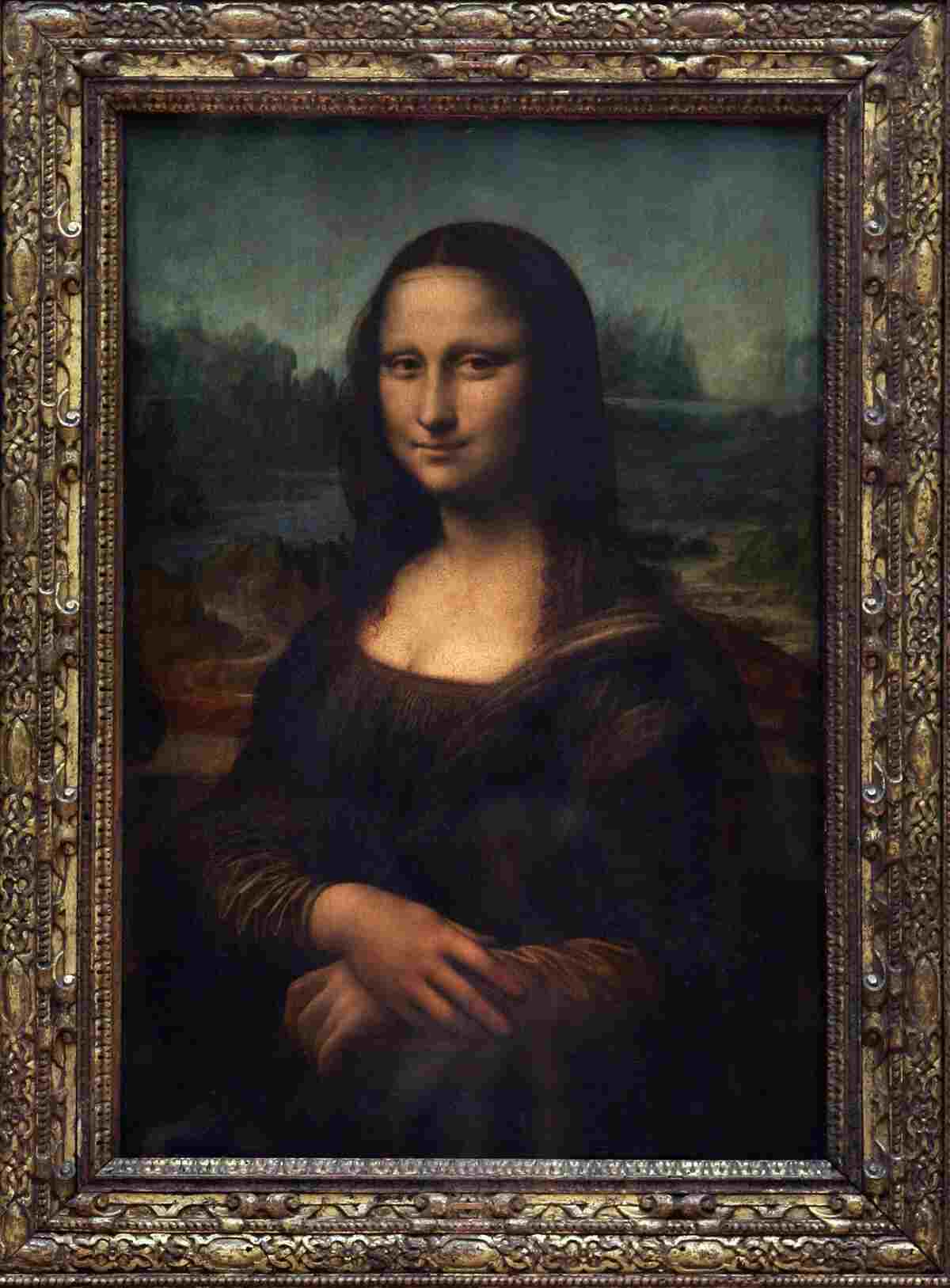
While some may find themselves questioning the hype surrounding the painting's simplicity, they soon discover that Leonardo's genius lies in his remarkable talent for realism. Through subtle gradations of light and shadow, skillfully executed with the technique of sfumato, he breathes life into the subject's softly modeled face, eschewing lines in favor of nuanced shading to convey form.
2. Last Supper (c. 1495–98)
Among the most renowned paintings globally, the Last Supper was commissioned by Ludovico Sforza, the Duke of Milan and Leonardo's esteemed patron during his initial sojourn in the city. Its intended destination was the Dominican monastery of Santa Maria delle Grazie. In this masterpiece, Leonardo masterfully portrays a sequential narrative, capturing closely interconnected moments from the Gospels, particularly Matthew 26:21–28. This section recounts Jesus' revelation that one of his trusted Apostles will betray him, followed by the establishment of the Eucharist.
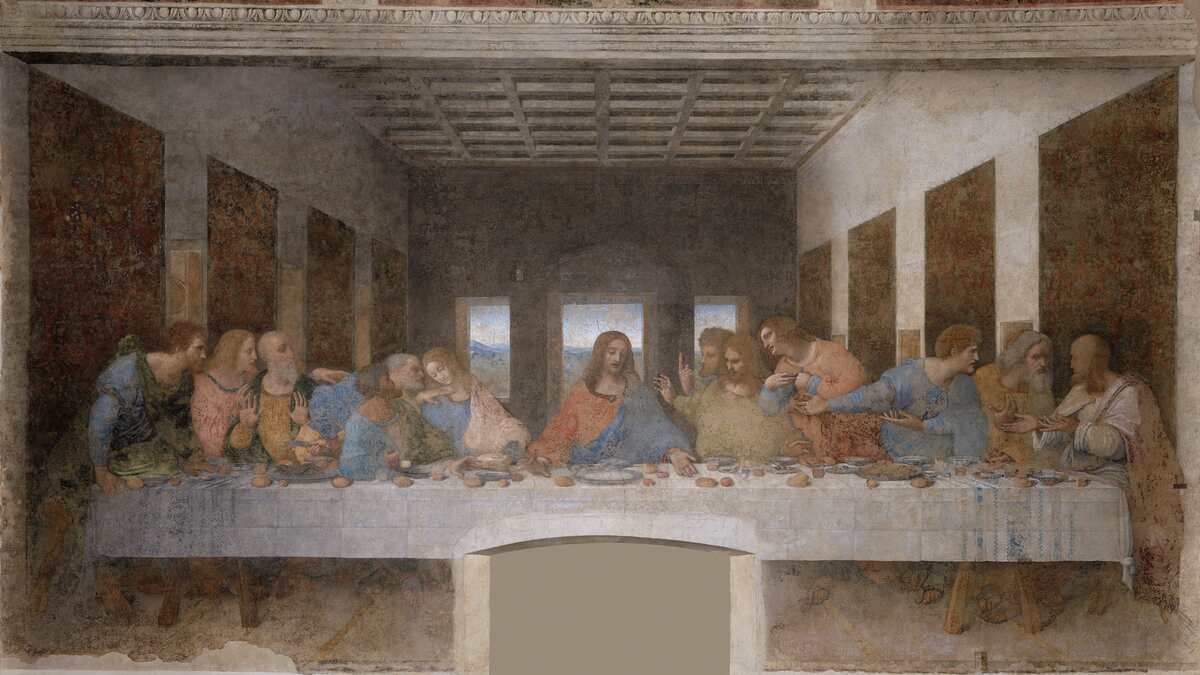
Leonardo's fascination with how a person's character can be unveiled through posture, expression, and gesture shines through in the painting. Each disciple's unique reaction to Jesus' disclosure is depicted with remarkable precision. Their postures rise, fall, extend, and intertwine, as if engaged in whispered conversations, passionate debates, sorrowful outbursts, and heartfelt grief, all revolving around Jesus, who remains serenely seated at the center.
Unfortunately, due to Leonardo's experimental painting technique, wherein he utilized tempera or oil paint on two layers of preparatory ground, the artwork started to deteriorate shortly after its completion. Nevertheless, even amidst the ravages of time, viewers can still discern its brilliance as a profound exploration of diverse human emotions, presented through a deceptively simple yet sophisticated composition. The Last Supper continues to captivate audiences as a timeless study of the human spirit, skillfully brought to life by the visionary brush of Leonardo da Vinci.
3. Vitruvian Man (c. 1490)
The Vitruvian Man, a remarkable pen-and-ink drawing by Leonardo, originates from one of the many notebooks he meticulously maintained during his later years. Accompanied by mirror-scripted notes, it delves into the ideal human proportions outlined by the ancient Roman architect Vitruvius in his book on architecture from the 1st century BCE.
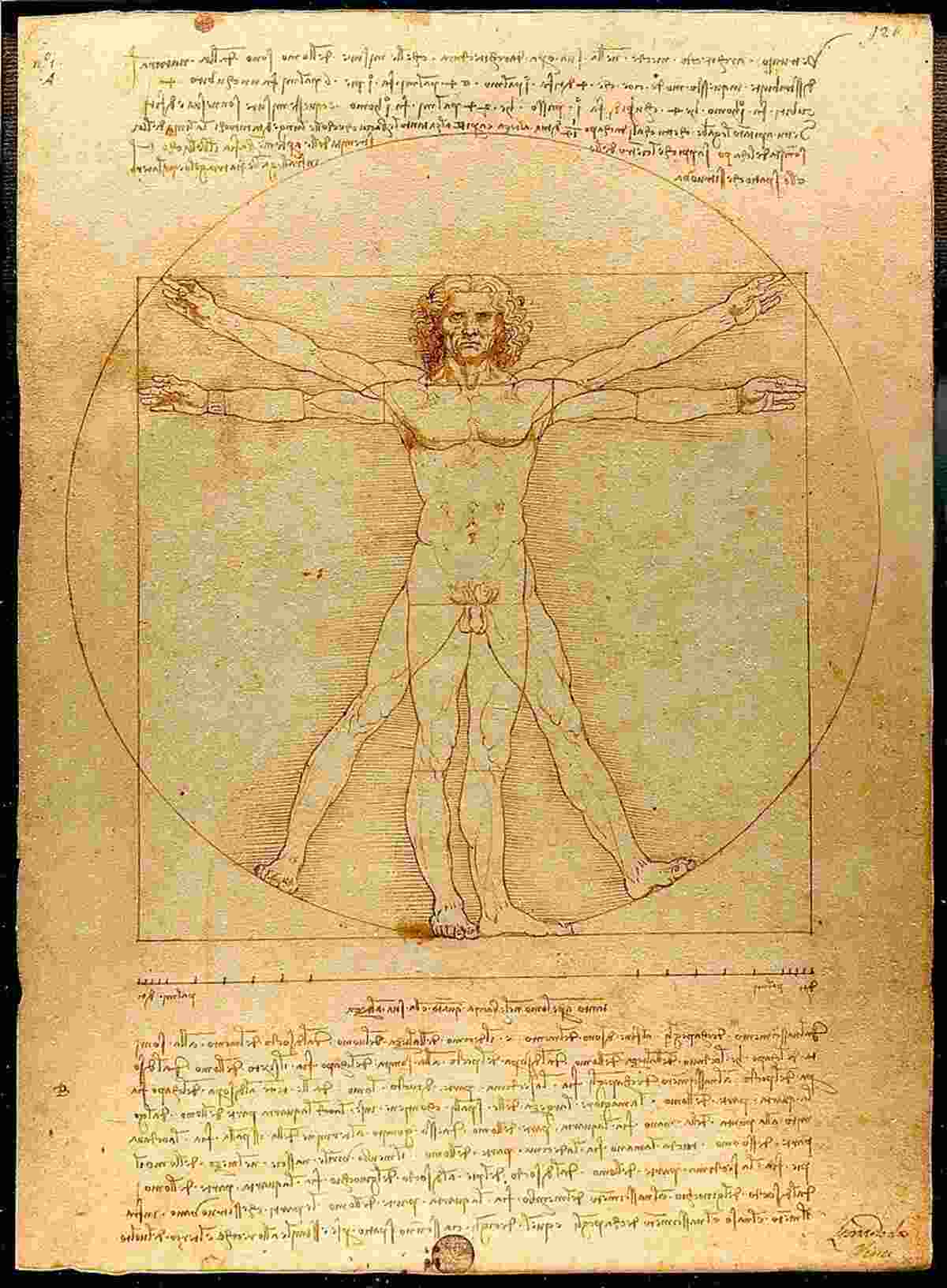
Leonardo's drawing serves as a visual representation of Vitruvius's theory, which posited that the perfect human form could be inscribed within both a circle and a square, seemingly contradictory shapes. To reconcile this concept, Leonardo ingeniously depicted a male figure in two superimposed positions. In one, the man's arms extend to fit precisely within the square, while in the other, his arms and legs stretch to encompass the circle.
Today, the drawing finds its home in the Gallerie dell'Accademia in Venice, though it is not usually publicly displayed. Instead, it is carefully preserved in a climate-controlled archive, ensuring that this extraordinary testament to Leonardo's brilliance remains protected for generations to come.
4. Self Portrait (c. 1490/1515–16)
For a long time, a red chalk drawing of an old man with flowing hair and a beard has been widely considered a self-portrait of Leonardo da Vinci, shaping the popular perception of his appearance. However, some scholars challenge this belief, pointing out that the figure's weathered features, furrowed brow, and melancholic gaze suggest an age far beyond what Leonardo ever reached—he passed away at 67. Instead, they propose an alternative theory: this drawing might be one of Leonardo's grotesque sketches, a common practice for him, where he depicted people with peculiar and eccentric characteristics in his notebooks.
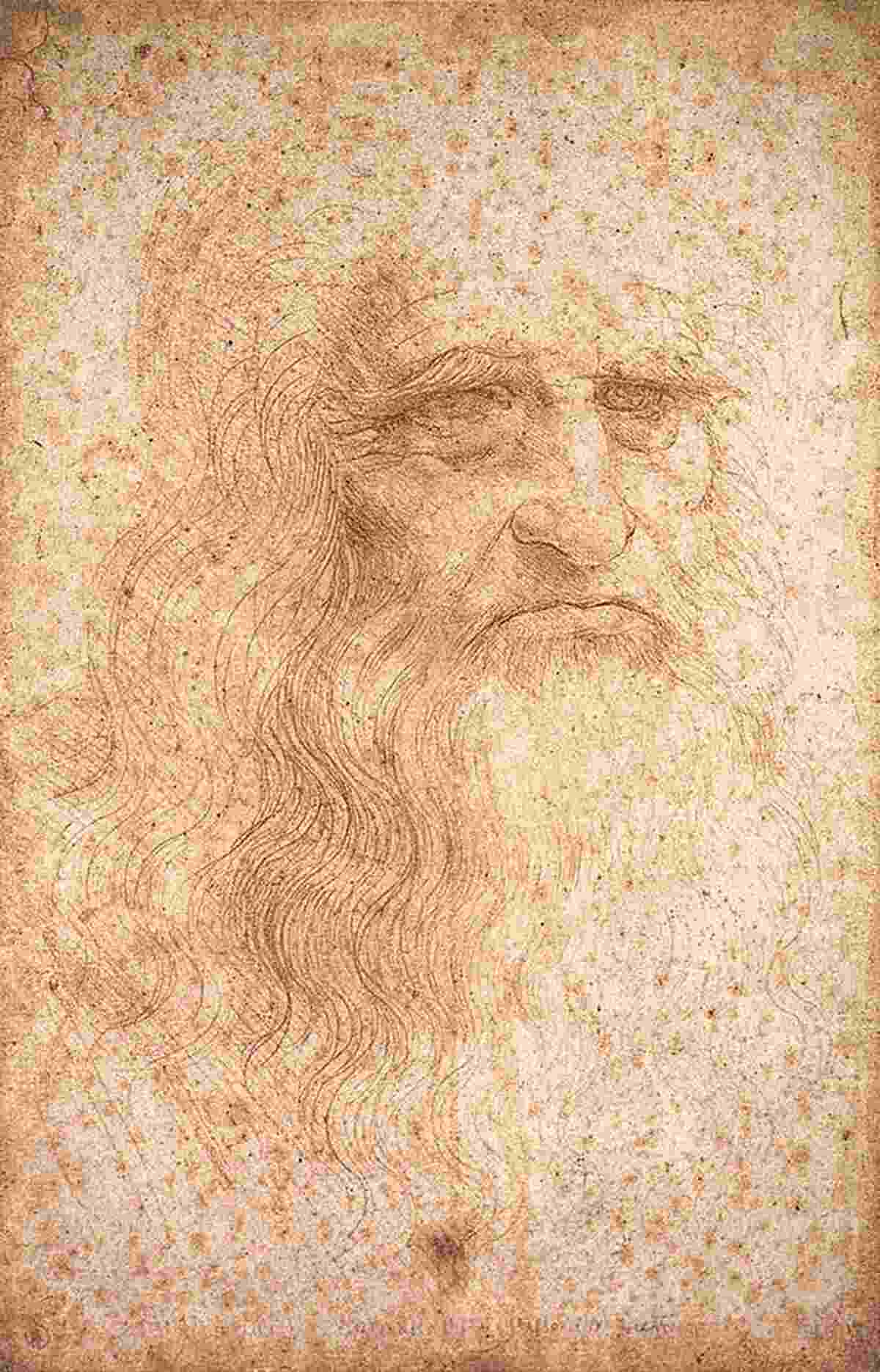
Regardless of the subject's identity, the drawing stands apart from Leonardo's usual captivating subjects. Nevertheless, the artist managed to infuse the figure with an air of dignity and wisdom befitting someone of advanced years. The portrayal exudes the nobility and insight that come with the passage of time and the experience of a mature age.
While the true identity of the old man remains uncertain, the drawing serves as a testament to Leonardo's versatility as an artist, showcasing his ability to imbue his subjects with a profound sense of character and emotion, whether they were real individuals, self-portraits, or products of his imaginative explorations.
5. The Virgin of the Rocks (c. 1483–86)
The painting "The Virgin of the Rocks" housed in the Louvre is believed by many scholars to be the first of two depictions that Leonardo created based on an apocryphal legend. This legend narrates the meeting of the Holy Family with Saint John the Baptist as they flee from Herod's Massacre of the Innocents during their journey to Egypt. The commission for this artwork came from the Confraternity of the Immaculate Conception, but it led to years of legal disputes between Leonardo and the patrons. Eventually, this conflict prompted Leonardo to paint another version of the same subject around 1508, now located in the National Gallery of London.
"The Virgin of the Rocks" is a significant example of Leonardo's contributions to the emergence of the High Renaissance style. During this period, early paintings often portrayed figures in rigid and linear arrangements, disconnected from one another. However, in this masterpiece, Leonardo defied convention by arranging the figures of the Virgin Mary, the Christ Child, the infant John, and an archangel in a pyramidal composition. They not only convincingly occupy the depicted space but also interact with one another through gestures and glances, revealing a sense of unity and emotion.
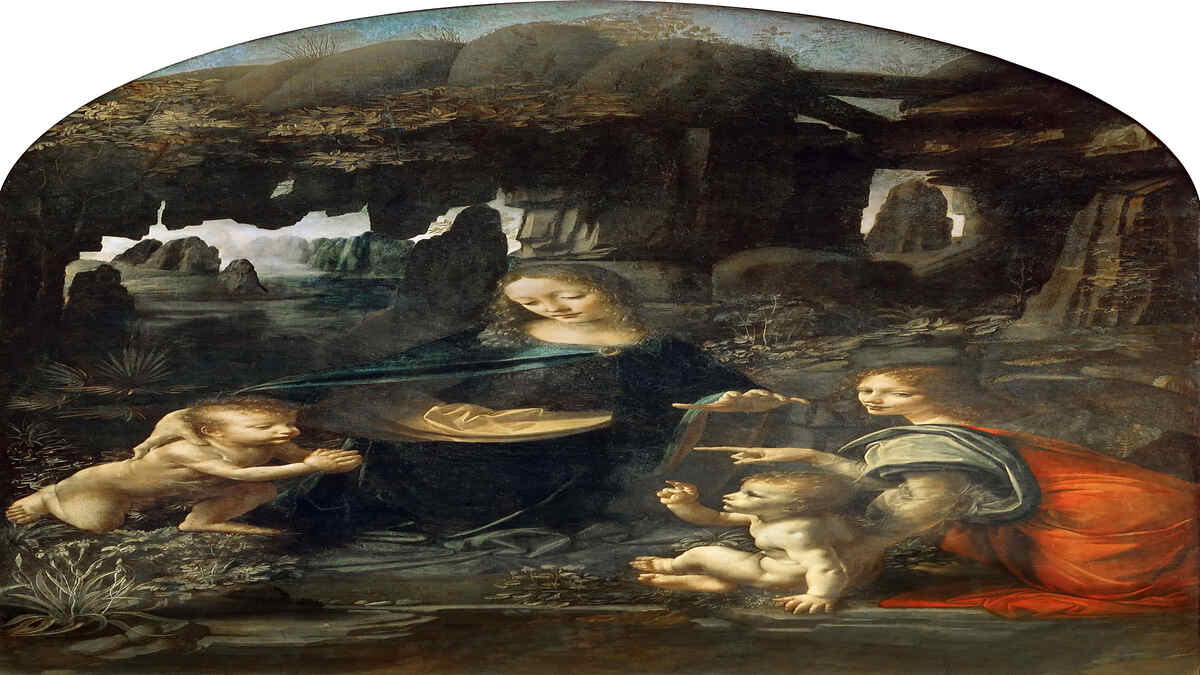
Mary is depicted as youthful, sitting on the ground in a mysterious rocky landscape, deviating from the traditional portrayal of her on a throne, which was common in early Renaissance works. Her body displays fluid movement, as she tilts her head protectively towards the infant John, who kneels in prayer on the left, and nudges him gently towards the Christ Child on the right. In turn, Jesus blesses John, while the archangel, depicted from the back in a complex pose, points towards John, his gaze inscrutable as it reaches out to the viewer.
Interestingly, Leonardo chose to exclude the usual holy signifiers such as halos for Mary and Christ or staff for John, presenting the Holy Family in a more human light rather than emphasizing their divine nature. This departure from traditional religious symbolism adds depth and relatability to the figures, making them feel more accessible and approachable to the viewer.
6. Head of a Woman (1500–10)
"Head of a Woman" is a captivating small brush drawing, delicately adorned with pigment, portraying a young woman with a tilted head and downcast eyes. Interestingly, her posture bears a resemblance to the Virgin Mary depicted in Leonardo's renowned work, "The Virgin of the Rocks," suggesting that this drawing may have served as a model for the latter.
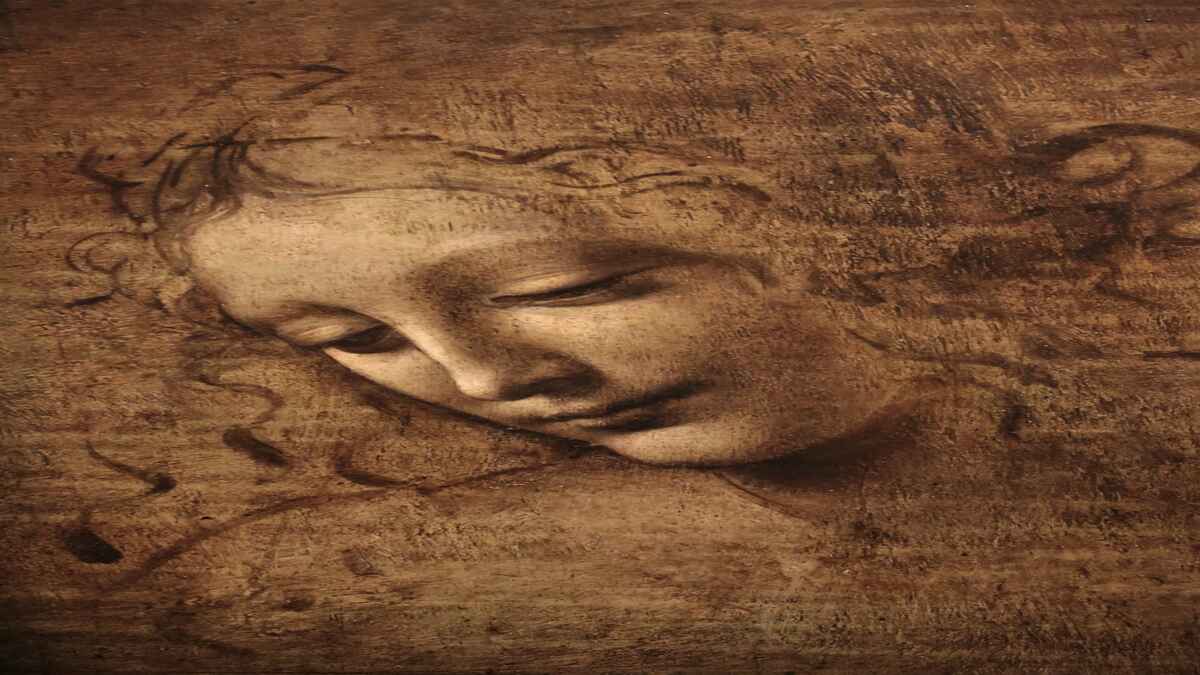
Nicknamed "La Scapigliata," which translates to "disheveled," this artwork captures the young woman with strands of hair loosely sketched, lending her a carefree and unruly appearance. The contrast between the loosely sketched hair and shoulders against the highly detailed face highlights Leonardo's remarkable artistic finesse. In the face, he employs gentle modeling to bring out the woman's delicate features, from her heavy eyelids to her tender lips, imbuing her with a captivating and evocative allure.
The drawing serves as a testament to Leonardo's versatile and fluid approach to his craft. He employs expressive strokes to create form, giving the young woman's figure a sense of life and motion. Simultaneously, he exercises precise control in layering to provide intricate detail, resulting in a harmonious balance of free-flowing expression and meticulous artistry.
7. Lady with an Ermine (c. 1489–91)
Art historians commonly identify the young woman in "Lady with an Ermine" as Cecilia Gallerani, who was the mistress of Leonardo's patron, Ludovico Sforza, the Duke of Milan. The ermine, an animal used as an emblem for the duke, is gracefully cradled by the woman. Her gaze is turned towards the right, as if she's attentively observing something beyond the frame.

Despite the painting having undergone significant overpainting, especially evident in the dark background, it still showcases Leonardo's profound understanding of anatomy and his talent for conveying character through posture and expression. In the girl's countenance, Leonardo captures her youthful charm and amiable nature, reflecting innocence and sincerity in her bright eyes and the tender embrace of the ermine. The ermine itself appears regal and vigilant, with its head held high in a proud posture.
Leonardo's meticulous attention to detail is evident in the slender hand of the young woman, where he masterfully renders the intricate bone structure beneath the skin. Similarly, the ermine's head is meticulously depicted, hinting at the skull hidden beneath the exquisitely rendered fur.
8. Salvator Mundi (c. 1500)
In 2017, the head-on portrait of Salvator Mundi, meaning "Savior of the World," made international headlines when it shattered auction records, selling for an astounding $450.3 million. The remarkable price tag was especially surprising considering the painting's poor condition, questionable history, and the ongoing debate over its attribution among experts and critics.
Many art pundits pointed out what they perceived as shortcomings in the artwork. They criticized the portrayal of Jesus' face, deeming it lacking in skill and finesse. Additionally, the stiff posture depicted in the painting deviated from the characteristic dynamic and twisting poses often associated with Leonardo's work. Moreover, the representation of the glass globe held by Jesus seemed unconvincing, as it failed to create the optical illusion of a distorted reflection that Leonardo was known for mastering.
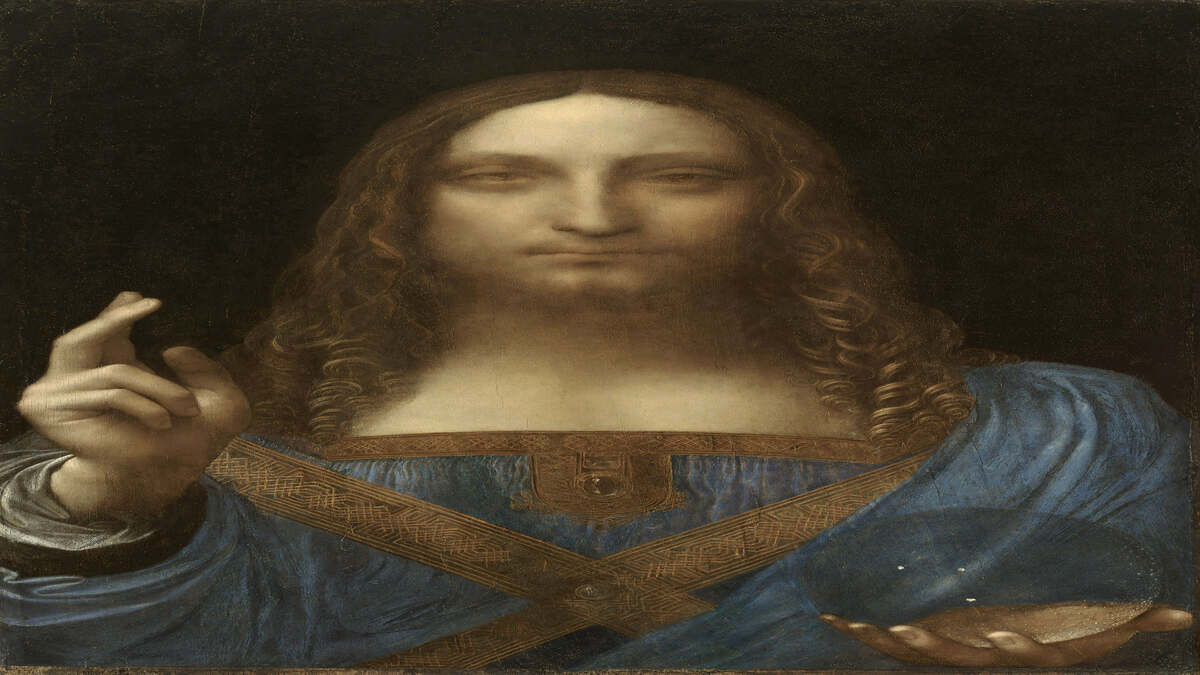
Despite the criticisms, Christie's, the auction house responsible for the sale, defended the painting. They attributed any flaws in the craftsmanship to extensive restorations carried out in previous centuries. Christie's highlighted certain aspects of the artwork, such as the soft modeling of Jesus' right hand and the intricately rendered tight curls, as evidence of Leonardo's technique. Moreover, they asserted that conservators had confirmed the use of materials, notably the expensive and high-quality blue pigment ultramarine, consistent with Leonardo's artistic practice, often reserved exclusively for skilled artists.
9. Ginevra de’ Benci (c. 1474/78)
The portrait of Ginevra de’ Benci, housed in the National Gallery of Art in Washington, D.C., holds a unique distinction as the only painting by Leonardo da Vinci publicly displayed in the Western Hemisphere. Created in his early 20s, it stands as one of Leonardo's earliest works and already showcases some of the unconventional techniques that would become characteristic of his artistic career.
In a departure from the general norms of the time, Leonardo was inspired by his Northern contemporaries to depict the young woman, Ginevra, in a three-quarter pose instead of a customary profile. This innovation in composition may have made him the first Italian artist to employ such a style. Interestingly, Leonardo continued to use the three-quarter view in all his portraits, including the famous Mona Lisa, and it eventually became the standard for portraiture worldwide, so prevalent that viewers often take it for granted today.
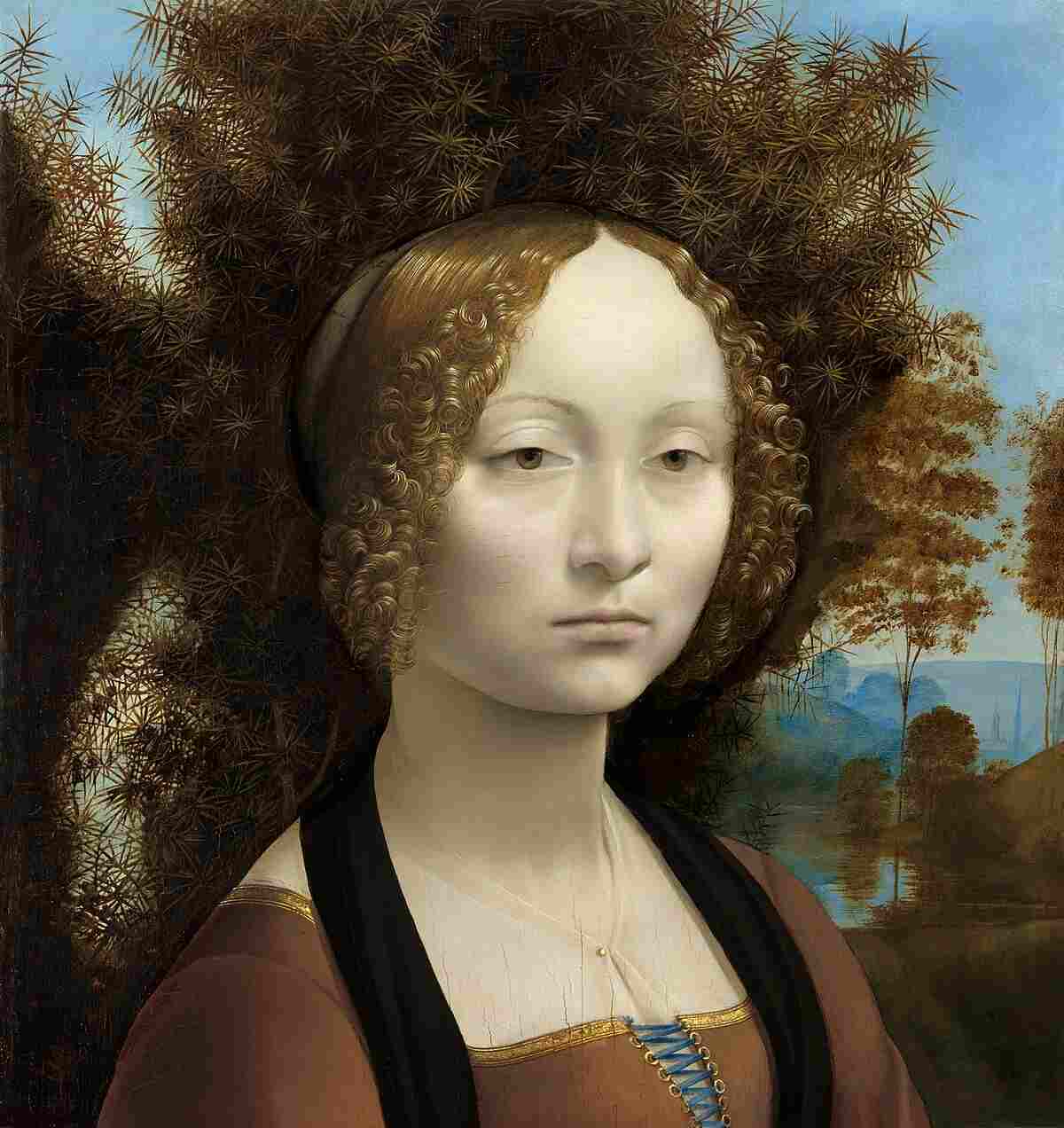
Leonardo's innovative approach is further exemplified by the fingerprints found in the paint surface of the portrait. Some suggest that he may have used his fingers to model Ginevra's face while the paint was still tacky, revealing his experimental and tactile approach to his art.
The reverse side of the painting reveals a wreath of laurel and palm surrounding a sprig of juniper (ginepro in Italian, which is a pun on the sitter's name). Intertwined with the flora is a scroll bearing the Latin phrase "beauty adorns virtue." However, the reverse side appears truncated, suggesting that the painting might have been cut at the bottom, possibly due to damage from water or fire over time.
Scholars speculate that the original portrait may have included Ginevra's hands, and some propose that a silverpoint study of arms and hands preserved at Windsor Castle could have served as a preliminary drawing for the portrait.
10. The Virgin and Child with Saint Anne (c. 1503–19)
"The Virgin and Child with Saint Anne" is believed by some scholars to be Leonardo da Vinci's final painting, where he skillfully employed the conventions he had honed throughout his illustrious career to portray three generations of the Holy Family—Saint Anne, her daughter, the Virgin Mary, and the Christ Child.
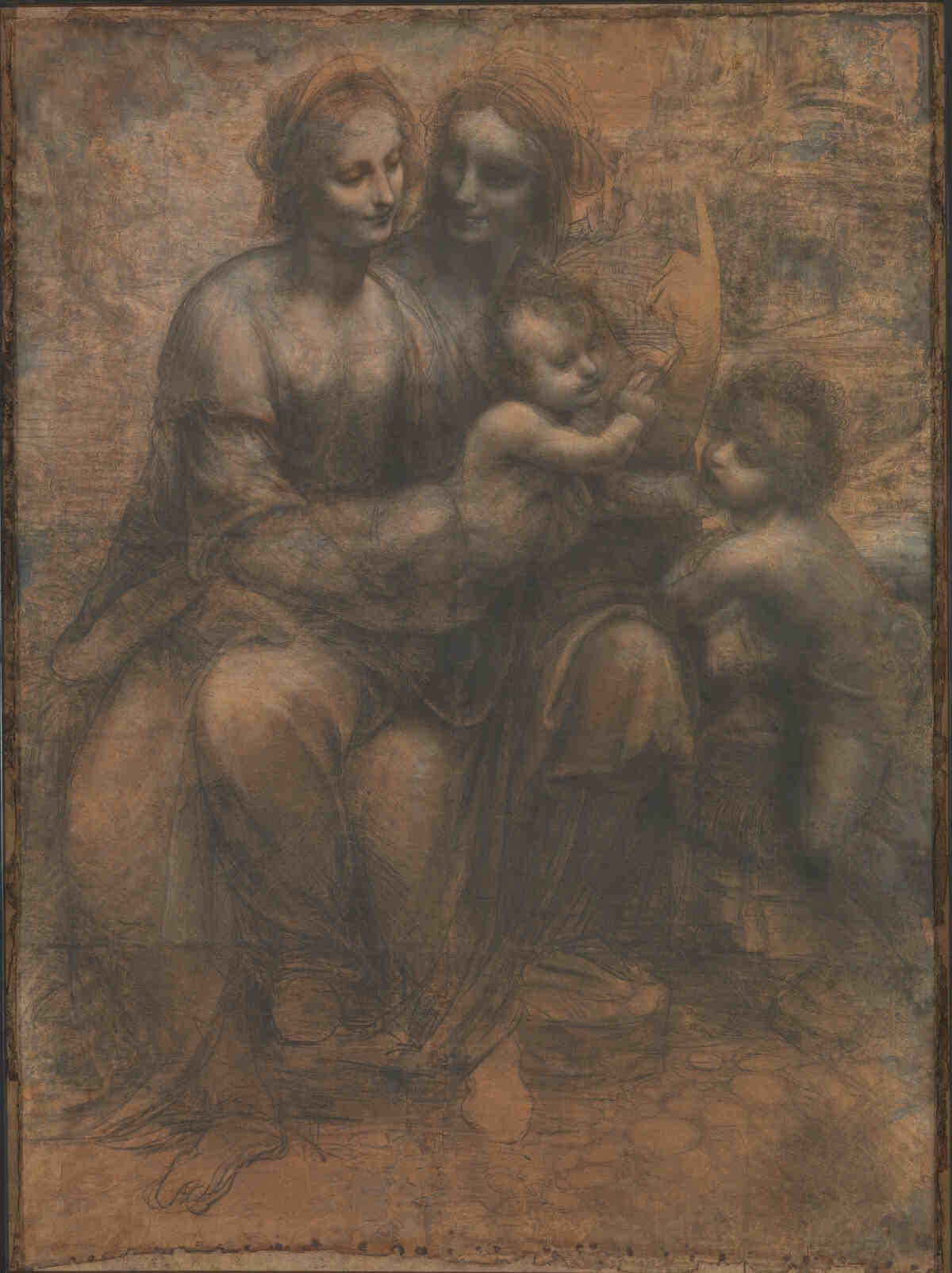
In this pyramidal composition, Saint Anne stands at the apex, observing Mary, who sits on her lap. The tender interaction between the Virgin and the Christ Child is beautifully depicted, as Mary gently restrains her playful son from mounting a lamb. In contrast to the knowing infant portrayed in "The Virgin of the Rocks," the Christ figure in "The Virgin and Child with Saint Anne" appears innocent, exuding juvenile charm and displaying a trusting expression as he gazes back at his mother. Leonardo's adeptness at capturing authentic human relationships shines through in the intimate portrayal of the figures.
The painting also exemplifies Leonardo's lifelong fascination with convincingly representing three-dimensional space on a two-dimensional surface. The figures are set amid a fantastical landscape, a common feature in many of his works. To create the illusion of distance, Leonardo utilized aerial perspective, a technique he extensively wrote about in his "Treatise on Painting." By painting the rocky formations in the background with a blue-gray tone and less detail than the foreground landscape, he masterfully conveys a sense of depth and distance. This technique can also be observed in his earlier works, such as the Mona Lisa and "The Virgin of the Rocks."
Comments
All Comments (0)
Join the conversation